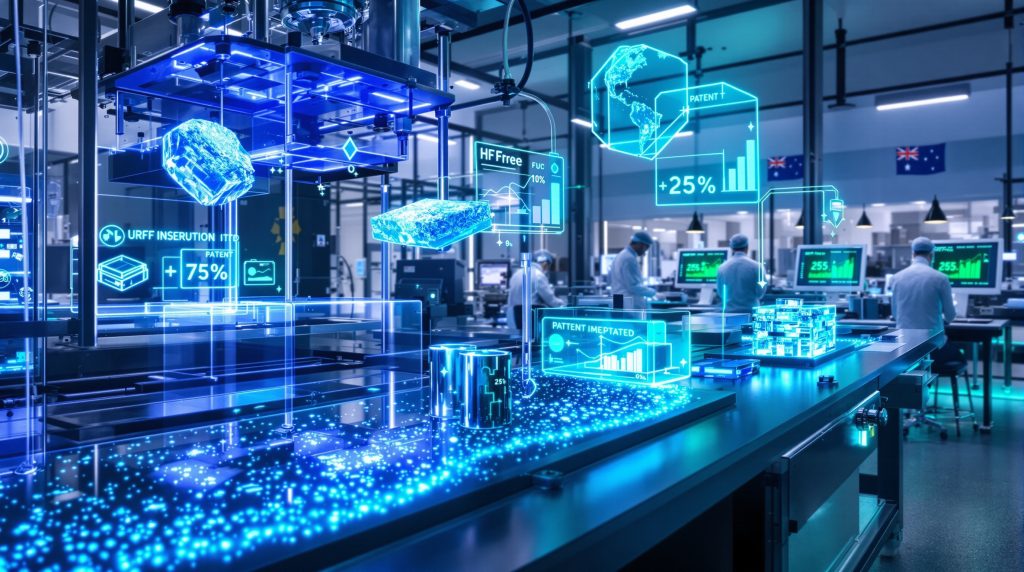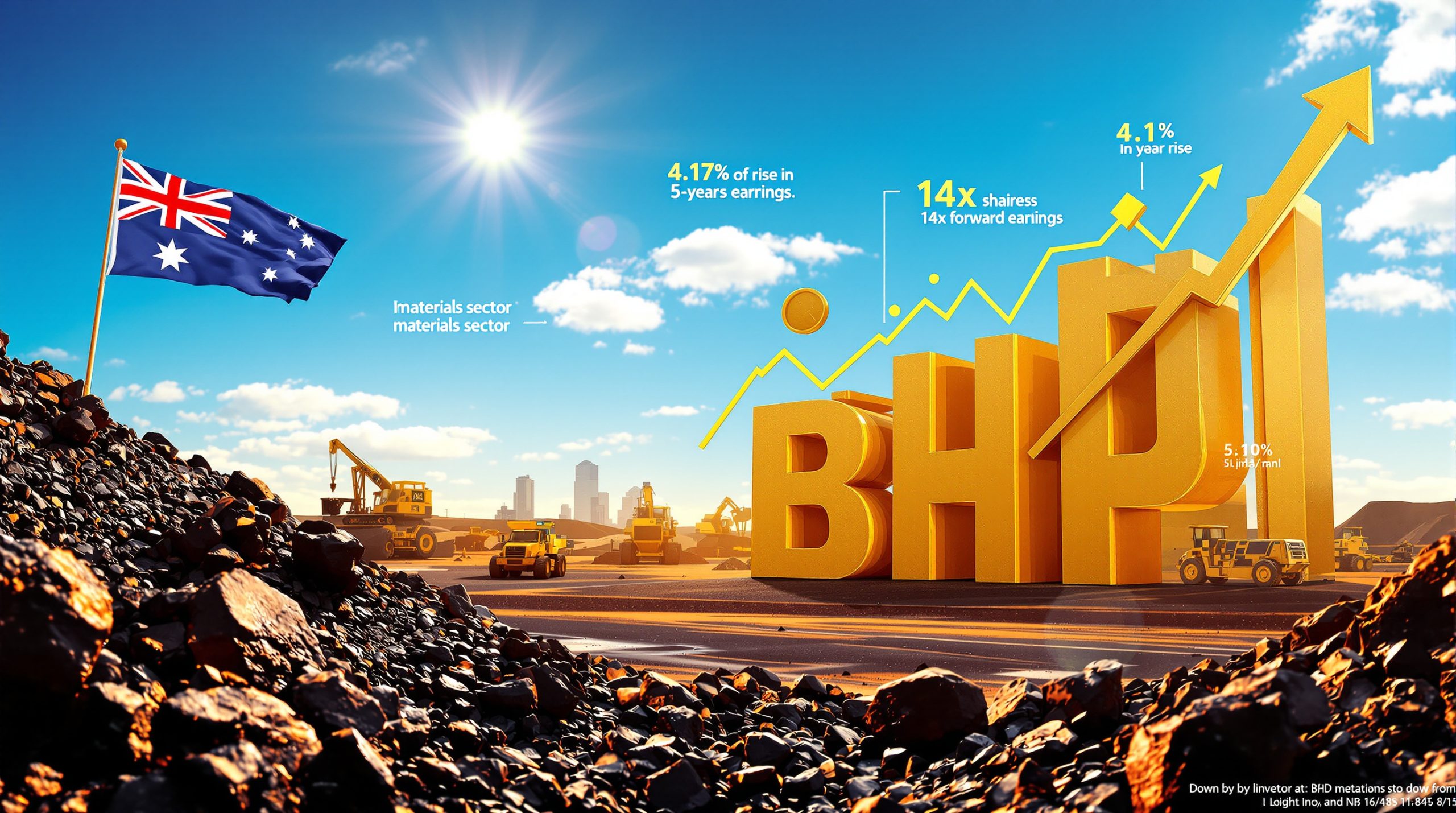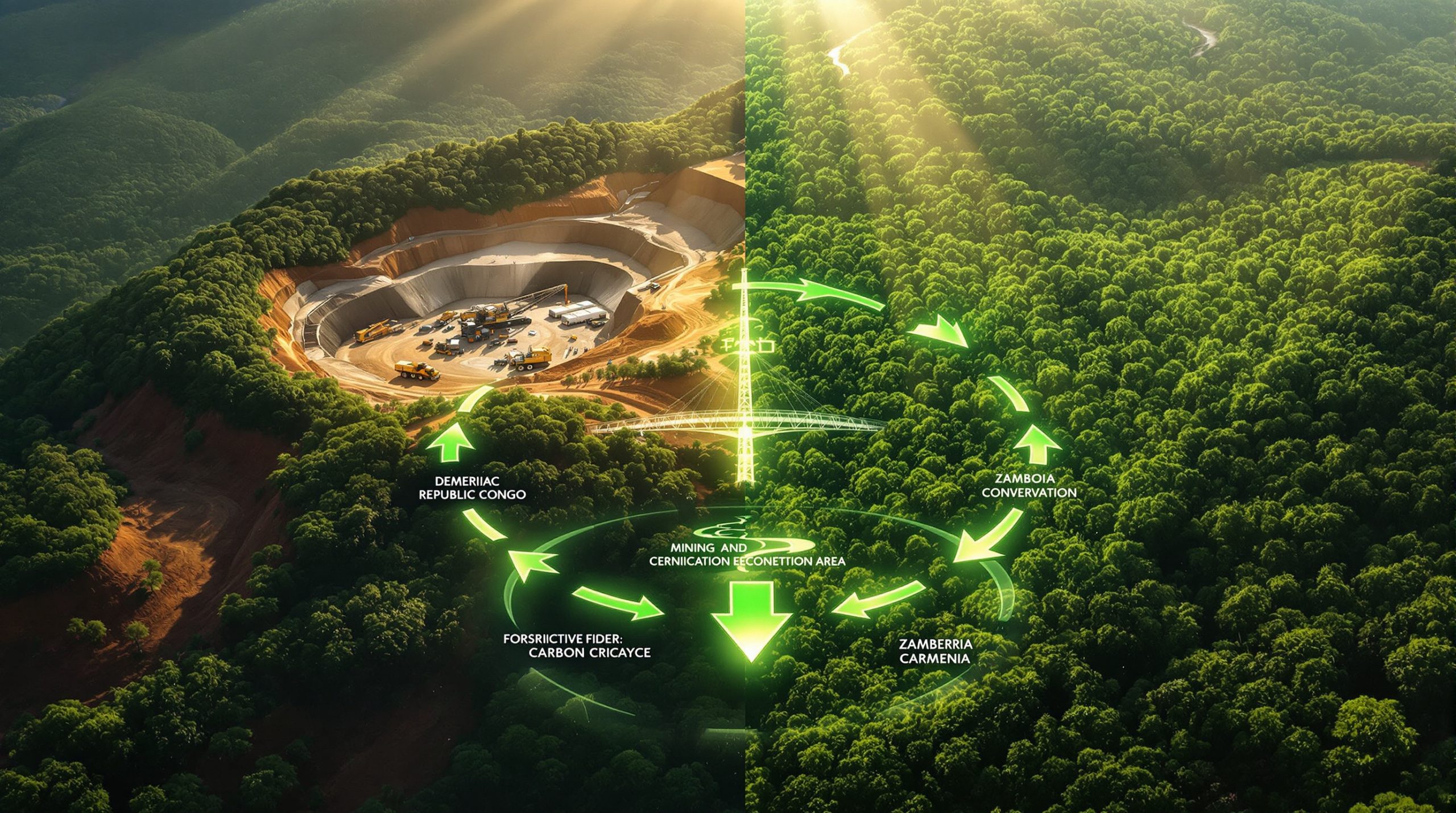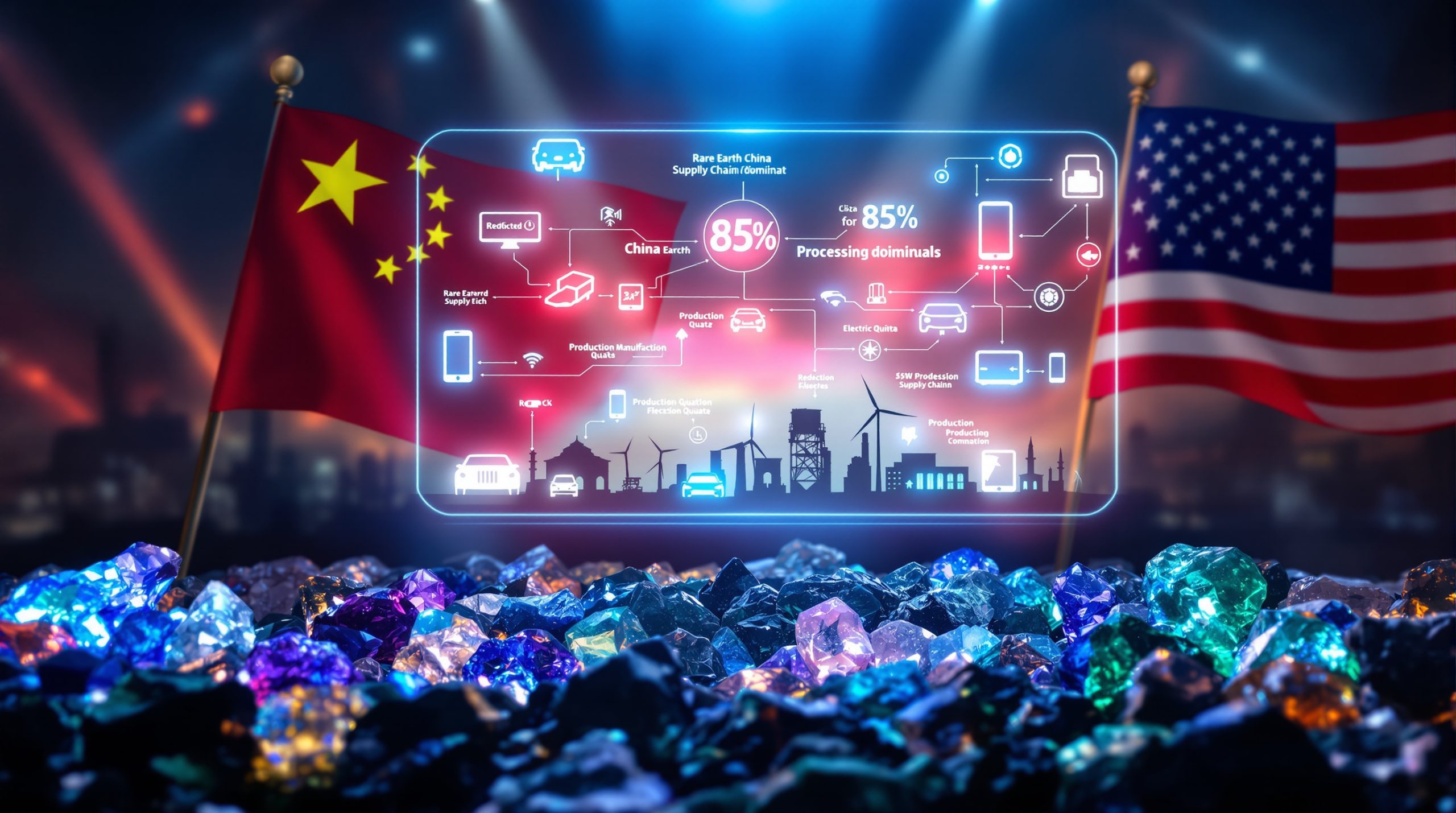EcoGraf's Groundbreaking HFfree Purification Technology Secures 20-Year Patent
EcoGraf's recent achievement of securing a 20-year Australian patent for their innovative HFfree purification technology marks a significant milestone in sustainable graphite processing. This development positions the company at the forefront of environmentally responsible battery material production at a critical time in the global transition to clean energy technologies.
What is EcoGraf's HFfree Purification Technology?
Understanding the Breakthrough Innovation
The HFfree technology represents a remarkable advancement in graphite purification methods. Unlike conventional processes that rely on hydrofluoric acid—a highly toxic and environmentally problematic chemical—EcoGraf's proprietary system employs alternative reagents that deliver comparable purification results without the associated environmental and safety risks.
This technology addresses one of the most significant challenges in graphite processing: achieving battery-grade processing while minimizing environmental impact. By eliminating hydrofluoric acid from the equation, EcoGraf has created a processing pathway that aligns with increasingly stringent environmental regulations and growing market demand for responsibly produced battery materials.
Key Technical Specifications and Advantages
The HFfree purification technology offers several distinct advantages over traditional methods:
- Utilizes readily available commercial reagents instead of dangerous hydrofluoric acid
- Maintains high purification efficiency while eliminating toxic chemical handling
- Achieves battery-grade purity levels exceeding 99.95%
- Reduces environmental footprint across the production cycle
- Decreases workplace safety hazards significantly
- Lowers regulatory compliance burdens associated with handling dangerous chemicals
- Enables more flexible facility siting options due to reduced environmental concerns
The process has been specifically engineered to integrate seamlessly with existing battery anode material manufacturing workflows, making adoption more straightforward for potential industrial partners.
Why is the 20-Year Australian Patent Significant?
Strategic Patent Protection Timeline
The newly granted 20-year Australian patent builds upon EcoGraf's previous intellectual property successes, creating a comprehensive protection framework for their innovative purification methods. This extended protection period is particularly valuable in the rapidly evolving battery metals investment sector, where technological advantages can translate into significant commercial opportunities.
The 20-year timeframe aligns strategically with industry forecasts for exponential growth in battery material demand, providing EcoGraf with market exclusivity during a period when graphite processing capacity is expected to expand dramatically to meet electric vehicle and energy storage requirements.
Global Patent Strategy Expansion
EcoGraf's patent strategy extends well beyond Australia, with applications filed in several key manufacturing regions:
| Region | Status | Strategic Importance |
|---|---|---|
| European Union | Pending | Access to Europe's rapidly expanding battery gigafactory ecosystem |
| South Korea | Pending | Integration with established battery manufacturing powerhouse |
| Malaysia | Pending | Emerging Southeast Asian processing hub with favorable regulations |
| Vietnam | Pending | Growing manufacturing center with strategic mineral focus |
This global approach to intellectual property protection demonstrates EcoGraf's understanding of the international nature of battery supply chains and positions the company to capitalize on manufacturing opportunities across multiple regions.
How Does the Product Qualification Facility Enhance the Technology?
Australian Government Co-Funding Initiative
The Product Qualification Facility (PQF) represents a critical step in EcoGraf's commercialization journey. With support from the Australian government's Critical Minerals Development Program, this facility enables the company to demonstrate the technology at a scale that provides potential customers with confidence in both the process and resulting materials.
The government's financial backing underscores the strategic importance of developing domestic critical mineral processing capabilities, reducing Australia's reliance on offshore processing while capturing more value from locally extracted resources.
Recent Performance Metrics and Economic Validation
Testing at the PQF has yielded impressive economic indicators that strengthen the commercial case for HFfree technology:
- 25% reduction in estimated operating costs to approximately US$478 per tonne
- Demonstrated scalability to initial production capacity targets of 25,000 tonnes annually
- Verification of consistent product quality meeting or exceeding battery manufacturer specifications
- Confirmation of process stability across varying input material characteristics
- Validation of reagent recycling capabilities, further improving sustainability metrics
These performance benchmarks have attracted increasing attention from battery manufacturers seeking to secure environmentally responsible material supply chains while maintaining competitive cost structures.
What Market Applications Does the HFfree Technology Address?
Battery Anode Material Production
The primary application for EcoGraf's HFfree purification technology lies in battery anode material production. As electric vehicle adoption accelerates globally, demand for high-quality graphite suitable for lithium-ion battery anodes continues to surge. Industry forecasts suggest annual demand growth exceeding 25% through 2030, creating a substantial market opportunity.
The technology's ability to deliver battery-grade graphite without hydrofluoric acid aligns perfectly with battery manufacturers' increasing focus on environmental sustainability throughout their supply chains. Major automotive OEMs have established specific requirements for responsibly sourced materials, creating a premium opportunity for cleaner production methods.
High-Purity Graphite Products
Beyond battery applications, the patented process enables production of specialized high-purity graphite products serving diverse industrial applications:
- Thermal management systems for electronics and aerospace
- Fuel cell components requiring exceptional purity
- Advanced semiconductor manufacturing
- High-performance lubricants
- Specialized metallurgical additives
These diversified applications provide EcoGraf with multiple revenue streams and reduced exposure to any single market sector.
Lithium-Ion Battery Recycling
The HFfree technology's versatility extends to recycling applications, particularly in the recovery and purification of graphite from end-of-life lithium-ion batteries. This capability addresses growing concerns about battery waste management while supporting circular economy principles in the energy storage sector.
"Recycling capability isn't just environmentally responsible—it's becoming an economic necessity as battery material demand outpaces primary supply capacity. Technologies that can efficiently recover and purify graphite from spent batteries will play a crucial role in sustainable supply chains."
With battery recycling breakthrough mandates expanding globally, technologies that enable material recovery without harsh chemicals represent a significant competitive advantage.
How Does This Technology Impact Supply Chain Dynamics?
Reducing Dependency on Existing Supply Chains
The HFfree technology provides battery manufacturers with an alternative to traditional graphite supply chains, many of which center around environmentally problematic processing facilities. According to EcoGraf's Managing Director Andrew Spinks, this technological breakthrough enables customers to pursue more sustainable and transparent supply options.
The current graphite supply landscape is heavily concentrated, with approximately 70% of natural graphite processing occurring in facilities using conventional chemical methods with significant environmental impacts. EcoGraf's technology provides a pathway to diversification with improved environmental credentials.
Vertical Integration Opportunities
The patent strengthens EcoGraf's position in developing a vertically integrated business model connecting:
- Upstream natural graphite resources from Tanzanian development projects
- Midstream processing using HFfree purification technology
- Downstream customer relationships with battery manufacturers and other end-users
This integrated approach offers advantages in quality control, supply security, and value capture across the graphite value chain.
Regional Manufacturing Flexibility
A key advantage of the HFfree technology is its adaptability to multiple manufacturing environments. By relying on commercially available reagents rather than specialized chemicals with complex handling requirements, the process can be implemented across diverse geographic regions:
- European battery manufacturing clusters
- North American clean energy industrial zones
- Asian technology manufacturing centers
- Emerging markets with suitable infrastructure
This flexibility allows EcoGraf to pursue manufacturing opportunities close to either raw material sources or end customers, optimizing logistics while supporting regional manufacturing initiatives.
What Commercial Interest Has the Technology Generated?
Industry Recognition and Engagement
The HFfree technology has attracted significant industry attention, particularly from battery manufacturers implementing sustainability initiatives. As ESG (Environmental, Social, and Governance) considerations become increasingly important in supply chain decisions, processes that eliminate toxic chemicals while maintaining performance standards have distinct competitive advantages.
The company reports growing engagement from potential customers seeking qualification samples and discussing potential supply arrangements, reflecting the industry's interest in diversifying graphite supply chains with more sustainable options.
Offtake Arrangement Progress
The PQF represents a critical step toward securing commercial offtake arrangements. By providing qualified samples to potential customers, EcoGraf enables technical validation within customers' specific manufacturing processes, a necessary prerequisite to formal supply agreements.
The company's strategic approach focuses on securing anchor customers in key markets to support initial commercial-scale facilities, with expansion plans tied to growing demand forecasts across the electric vehicle and energy storage sectors.
Competitive Positioning in the Market
Recent test results have strengthened the HFfree technology's competitive position in several dimensions:
- Environmental performance significantly exceeding conventional processes
- Cost structures competitive with established suppliers
- Product quality meeting or exceeding industry specifications
- Process flexibility accommodating various graphite feedstocks
- Reduced regulatory compliance burden compared to hydrofluoric acid processes
These competitive advantages position EcoGraf to capture market share as graphite demand grows, particularly among customers prioritizing responsible sourcing initiatives.
What Are the Environmental Benefits of HFfree Technology?
Elimination of Toxic Chemicals
The most obvious environmental benefit comes from eliminating hydrofluoric acid, one of the most hazardous industrial chemicals in common use. Conventional graphite purification using hydrofluoric acid creates significant risks:
- Potential water contamination from improper handling or disposal
- Air quality impacts from emissions
- Worker safety hazards requiring extensive protective measures
- Long-term environmental liabilities at processing sites
By developing an alternative process using less hazardous reagents, EcoGraf addresses these environmental concerns while delivering comparable purification results.
Reduced Environmental Footprint
Beyond eliminating hydrofluoric acid, the HFfree technology delivers additional environmental benefits:
- Lower water consumption through optimized process design
- Reduced waste generation with improved reagent recovery systems
- Decreased energy requirements compared to conventional processes
- Smaller land footprint due to simplified handling and storage requirements
- Minimized transportation risks associated with hazardous chemicals
These environmental advantages align with growing regulatory pressures and market demands for more sustainable mining transformation in battery material production.
Alignment with Sustainable Battery Initiatives
The technology supports multiple sustainable battery initiatives gaining momentum globally:
- EU Battery Passport requirements for environmental transparency
- Responsible sourcing requirements from major automotive manufacturers
- Industry consortium standards for battery material environmental performance
- Emerging carbon footprint disclosure requirements for battery supply chains
As these initiatives transition from voluntary to mandatory frameworks, technologies that deliver improved environmental performance gain significant competitive advantages.
How Does This Technology Support Critical Minerals Strategy?
Strategic Resource Development
The HFfree technology aligns perfectly with national critical minerals strategies being implemented across major economies. Graphite's designation as a critical mineral by the United States, European Union, Japan, and Australia reflects its essential role in critical minerals energy transition technologies and limited processing options outside China.
By enabling environmentally responsible domestic processing, EcoGraf's technology addresses a key vulnerability in critical mineral supply chains while supporting national policy objectives for resource security.
Supply Chain Security Enhancement
Geopolitical tensions and pandemic-related disruptions have highlighted vulnerabilities in concentrated supply chains. The HFfree technology enables diversification of graphite processing capabilities across multiple regions, reducing dependency on any single source while improving overall supply chain resilience.
For battery manufacturers, this diversification represents a valuable risk mitigation strategy as they scale production to meet rapidly growing demand.
Advanced Manufacturing Capabilities
Beyond addressing immediate supply concerns, the technology contributes to developing advanced manufacturing capabilities in host countries. By establishing environmentally advanced processing facilities, EcoGraf supports broader economic objectives:
- Creation of high-skilled technical jobs
- Development of expertise in critical battery material processing
- Establishment of industrial ecosystems supporting battery production
- Technology leadership in sustainable processing methods
These broader economic benefits enhance the strategic value proposition for government support and partnerships.
What Are the Next Steps for Commercial Implementation?
Scaling Production Capacity
With the PQF demonstrating technology effectiveness, EcoGraf is positioned to scale up to commercial production capacity. Initial plans target a 25,000-tonne per annum facility, with potential for expansion as market demand grows and additional customer relationships develop.
The modular design approach enables phased capacity additions, allowing capital investment to align with secured customer commitments while maintaining flexibility to accelerate expansion if market conditions warrant.
Strategic Partnership Development
EcoGraf is likely to pursue strategic partnerships across the battery value chain:
- Upstream partnerships with natural graphite producers
- Midstream processing joint ventures to accelerate global deployment
- Downstream collaborations with battery manufacturers and automotive OEMs
- Technology licensing arrangements in selected markets
These partnerships can accelerate commercial implementation while distributing capital requirements and market risks.
Continued Innovation and Optimization
The patent provides a solid foundation for continued process refinement and optimization. Ongoing research and development will likely focus on:
- Further reducing operating costs through process efficiencies
- Enhancing material performance characteristics for specialized applications
- Expanding recycling capabilities for various battery chemistries
- Developing complementary technologies for comprehensive battery material solutions
This continuous improvement approach will strengthen the technology's competitive position as the market evolves.
FAQ: EcoGraf's HFfree Purification Technology
What makes EcoGraf's HFfree technology different from conventional graphite purification?
EcoGraf's technology eliminates hydrofluoric acid—a highly toxic chemical traditionally used in graphite purification—replacing it with environmentally benign reagents. This approach maintains high purity levels while significantly reducing environmental impacts, workplace hazards, and regulatory compliance burdens.
How does the technology impact the economics of graphite purification?
Recent testing demonstrates approximately 25% lower operating costs (approximately US$478 per tonne) compared to conventional methods. These savings come from reduced chemical costs, simplified handling requirements, and lower regulatory compliance expenses, making the process economically competitive while offering superior environmental performance.
Can the HFfree technology be implemented globally?
Yes, the technology uses readily available commercial reagents without specialized handling infrastructure, making it suitable for implementation across diverse geographies. This flexibility allows processing facilities to be established near either raw material sources or end customers, optimizing logistics while supporting regional manufacturing initiatives.
What role does the Australian government play in this technology's development?
The Australian government has provided co-funding for EcoGraf's Product Qualification Facility through its Critical Minerals Development Program, recognizing the strategic importance of developing domestic processing capabilities for battery materials. This support reflects national policy objectives to capture more value from critical mineral resources while reducing dependence on overseas processing.
How does this technology contribute to circular economy initiatives?
The HFfree purification process is adaptable to recycling applications, particularly in recovering and purifying graphite from spent lithium-ion batteries. This capability addresses growing concerns about battery waste management while supporting circular economy principles in the energy storage sector, creating a sustainable pathway for graphite reuse as battery production scales.
Looking to Invest in the Next Major Mineral Discovery?
Discover significant ASX mineral discoveries instantly with Discovery Alert's proprietary Discovery IQ model, turning complex mineral data into actionable insights for investors. Explore why historic discoveries can generate substantial returns by visiting Discovery Alert's dedicated discoveries page and begin your 30-day free trial today to position yourself ahead of the market.




